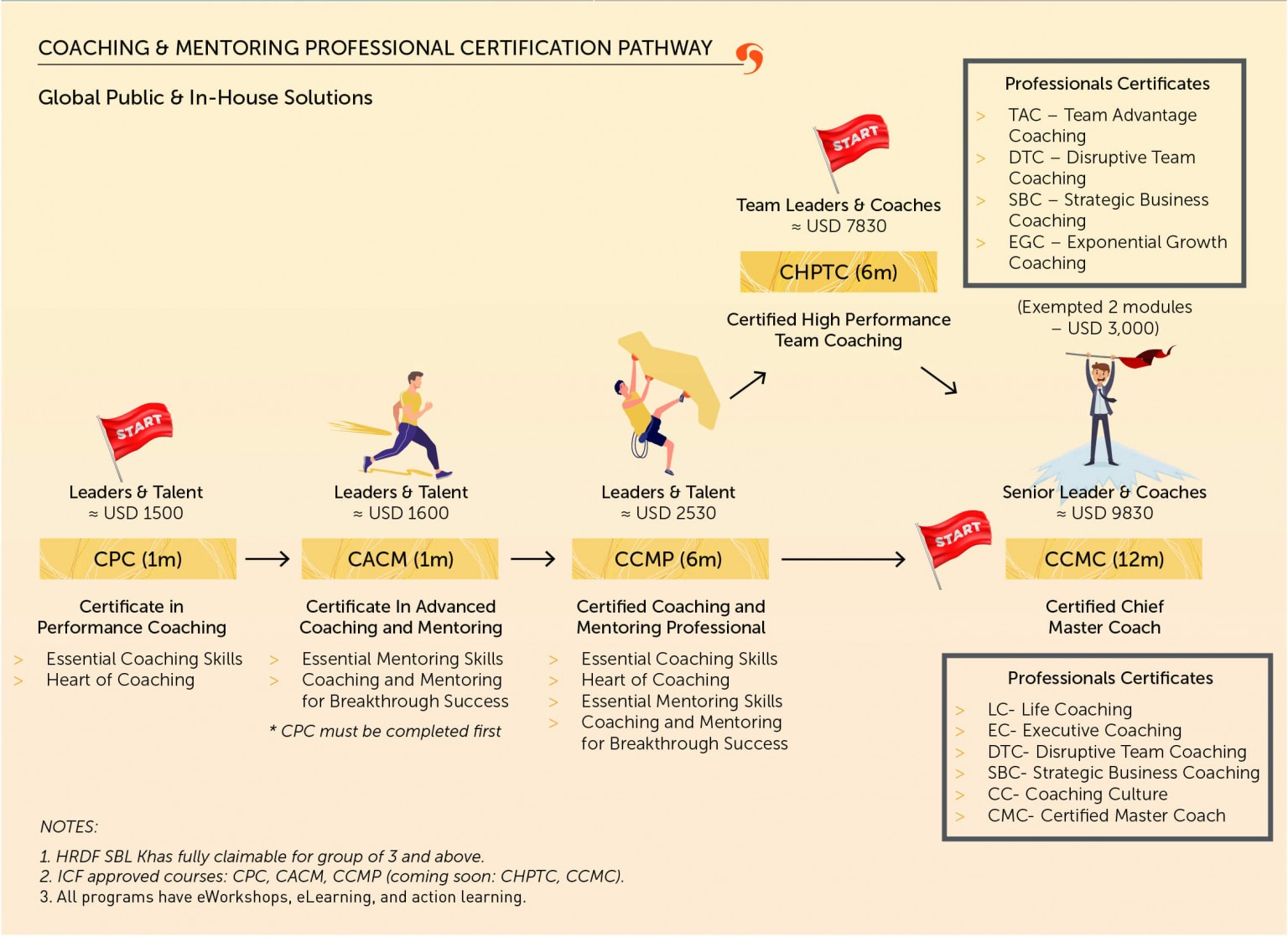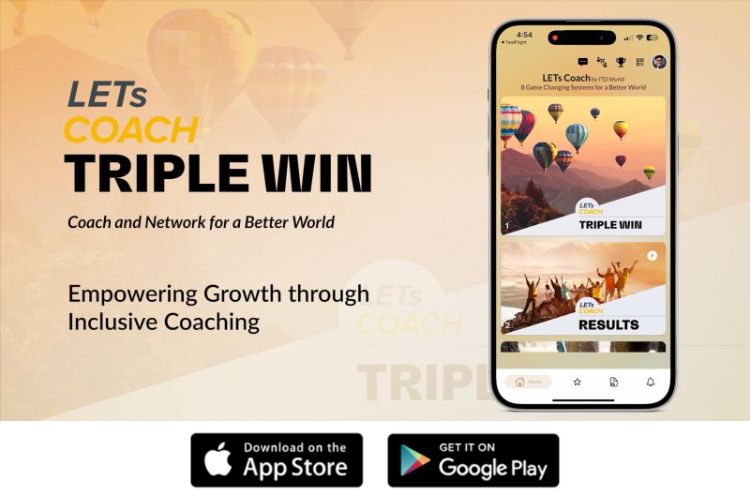A practical playbook for both new and experienced coaches to overcome common coaching challenges with confidence.
Great coaching isn’t defined by the absence of problems, but by the skill and grace with which one navigates them. These difficult moments – whether it’s a resistant client, a lack of organizational support, or a complex ethical dilemma – serve to forge deeper trust, reveal powerful insights, and ultimately separate good coaches from truly transformational ones. Learning to master the following coaching challenges is the key to facilitating lasting change.
|
Author: Jonathan M. Pham |
Highlights
- The main issues in coaching involve establishing trust and clear goals, balancing advice and empathy during sessions, managing the coach’s own biases and energy, and demonstrating the value of coaching within an organizational context.
- These challenges are not obstacles – but rather essential opportunities that foster wisdom, judgment, and character, ultimately leading to mastery and the ability to facilitate true transformation.
Coaching Challenges: Establishing a Relationship
These are the issues that need to be addressed at the very outset of any engagement. Getting them right sets the stage for everything that follows; otherwise, the entire process is likely to be derailed before it truly begins.
-
Building trust & psychological safety
A new client is hesitant, guarded, or unwilling to be open. They may give superficial, “correct” answers or utilize too many jargons instead of discussing their true feelings – either because they fear being judged or worry that what they say might be leaked out. Without trust, no real coaching can occur.
Strategies to overcome:
- Explicitly contract for confidentiality: Begin by clearly stating, “Everything we discuss in this space is 100% confidential and will not be shared with your manager or anyone else without your explicit permission.”
- Model vulnerability: Share a relevant and appropriate story of a challenge you have faced to demonstrate that you are human like them – and that this is a safe space to be authentic.
- Listen without judgment: Receive their answers with unconditional positive regard. Your focused, non-judgmental presence is the most powerful trust-builder there is.
Read more: Mastering Active Listening – Essential Skills for Success
-
Managing expectations & setting clear goals
Many people show up with a vague or unrealistic idea of what coaching is. They may expect you to be a consultant who will provide all the answers (e.g. someone who says, “Just tell me the three things I need to do to get promoted in the next six months.”), or they may have an undefined goal like, “I just want to be a better leader.”
Strategies to overcome:
- Clearly define roles: Do your best to gently explain your role as a coach (to ask powerful questions – i.e. akin to a facilitator) and that of the coachee (to do the inner work and take action).
- Co-create SMART goals: Work with the client to transform their vague goal into one that is Specific, Measurable, Achievable, Relevant, and Time-bound.
- Establish a formal agreement: It is recommended that you come up with a written agreement to outline the co-created objectives, the number of sessions, and how you will both measure success.
Successfully managing expectations prevents future disappointment and focuses the entire relationship on a clear, mutually agreed-upon target, which dramatically increases the likelihood of a successful and satisfying outcome for both parties.
Read more: 12 Leadership Coaching Topics to Drive Lasting Transformation

Difficult coaching scenarios
In-Session & Craft of Coaching Challenges
Once the foundation of trust and clarity is set, the core work of coaching begins (and this is where a coach’s skill is truly tested). Below are a few in-the-moment challenges that require a practitioner to be present, agile, and disciplined in their approach.
-
Asking questions vs. Giving advice (the “Expert trap”)
This is a constant temptation, especially for those with deep industry experience. A client describes a problem, and the coach – knowing a potential solution – feels a strong urge to simply tell them the answer. However, doing so turns the latter into a consultant and robs the former of the opportunity to work on their own problem-solving skills.
Example: A client is describing a marketing challenge, and the coach, a former Chief Marketing Officer, immediately sees the “correct” strategic solution.
Strategies to overcome:
- Practice the “pause”: As soon as you feel the urge to give advice, take a deliberate breath and pause. Use that moment to remind yourself that your role is to FACILITATE their thinking, NOT to do the thinking for them.
- Get curious: Instead of providing any specific answer, try to demonstrate curiosity about the person’s thought process. Ask a question that enables them to better reflect on themselves and explore the problem more deeply.
- Request for permission: If you have a perspective you believe is truly valuable, ask for permission to share it as an option, not a directive. “I have a thought on this from my own experience. Would you be open to hearing it?”
Avoiding the expert trap is the essence of great coaching. It contributes to the client’s long-term capability and confidence, ensuring they are more resourceful long after the engagement is over.
-
Balancing empathy with accountability
Many coaches (especially the less experienced ones) are so so focused on being supportive and empathetic that they hesitate to hold people accountable for their commitments. In other words, they get stuck in being “too nice,” which allows the client to avoid the difficult actions required for real change (e.g. they come to sessions without having completed the action steps outlined in the previous meeting, offering plausible excuses each time).
Strategies to overcome:
- Lead with empathy: Always start by acknowledging their reality. “It sounds like it was a very challenging week, and finding time for this was difficult.”
- Explore the pattern with curiosity: Gently point out the pattern without blame or judgment. “I’ve noticed this is the third time this particular action step has been postponed. What do you think is really getting in the way here?”
- Co-create a new, more realistic commitment: Work with them to design a smaller, more achievable first step to build momentum, or consider if the underlying goal needs to be revised.
Sample question to ask the client: “What would need to be true for you to ensure this action gets completed before our next session?”
Read more: 5Cs of Effective Accountability Partners
-
Navigating client resistance & performing follow-up
Some clients may exhibit signs of active or passive resistance. They may openly express doubt (“I’ve tried all this before, and it doesn’t work”; “I don’t think this ‘mindset’ stuff is the real issue; the problem is my boss”), challenge the process, or passively resist by consistently showing up unprepared.
Strategies to overcome:
- Name it directly but gently: Address the dynamic in the room. “I’m sensing some hesitation to explore this topic today. Can we talk about what’s coming up for you?”
- Reconnect to their “why”: Remind the client of their original intention. “Let’s go back to what you said you wanted to achieve when we started. How does tackling this current challenge serve that bigger goal?”
- Check the coach-client fit: Sometimes, it may be wise to be open to the possibility that you are not the right coach for them at this time. “My most important goal is that you get the support you need. Let’s explore if our partnership is still the best way to help you realize your own vision.”
While challenging, addressing resistance directly often leads to the biggest breakthroughs. The resistance itself is usually pointing to a deeper, unstated fear or belief that is the real obstacle. Successfully navigating it lays the foundation for a a much stronger and more honest coaching alliance.
Read more: Coaching People Who Don’t Want to Be Coached

Challenges of coaching and mentoring
The Coach’s Internal Challenges
Some of the most significant coaching challenges do not come from the client, but from within the coach themselves. Great coaching requires a high degree of self-management, self-awareness, and emotional discipline. Mastering this inner game is what allows a coach to show up as their best self for every client, every time.
-
Managing one’s own ego & biases
Even the most well-intentioned coach still has an ego that desires to be helpful, smart, and right. As a result, they may unconsciously steer a client toward a solution they themselves prefer, or become attached to a particular outcome. Unconscious biases related to the coach’s own career path, experiences, or values may also cloud their objectivity.
Example: A coach who built a successful career by climbing the corporate ladder might, unknowingly, push a client to pursue a promotion, even if the client is expressing a desire for more entrepreneurial or creative work. The coach’s own definition of success gets in the way.
Strategies to overcome:
- Practice rigorous self-reflection: Take the time to ask yourself, “Is this question for my client’s benefit, or is it to prove my own intelligence?”, “Are my personal experiences coloring how I see my client’s situation?”, or “What belief am I holding about this situation that might be getting in the way of my client’s own discovery?”
- Engage in professional supervision: It’s not a bad idea to occasionally discuss your work with a mentor coach or a peer supervision group. Many times, it may help uncover unconscious biases and ego-driven patterns you cannot see on your own.
- Stay radically curious: Make curiosity your default state – by genuinely seeking to understand the client’s unique worldview rather than trying to fit them into your own.
Learning to master one’s own ego is the gateway to true client-centricity. It allows you to become a perfectly clear mirror for your client, free from personal distortions – which is the ultimate service a coach can provide.
Read more: Ego in the Workplace – The Hidden ‘Evil’ Behind Team Dysfunctions
-
Maintaining presence & energy (avoiding burnout)
The act of deep listening and holding a safe, supportive space for others is incredibly demanding work. A coach who is overworked, distracted, or emotionally depleted cannot be fully present for their clients, which severely diminishes their effectiveness. This is one of the biggest “cons” of the coaching profession.
Example: Let’s say one is in a session, but their mind is drifting to the three other client calls they have that day and the administrative tasks piling up. They are physically in the meeting, but not mentally or emotionally present for the client.
Strategies to overcome:
- Set firm boundaries: You need to schedule non-negotiable breaks between sessions to reset and recharge, as well as to be well aware of your limits on the number of sessions you can conduct within a day.
- Develop a pre-session ritual: Create a short, consistent ritual to clear your mind and center yourself before each coaching conversation. This could be a two-minute meditation, a few deep breaths, or simply setting a clear intention for the session.
- Invest in your own well-being: A coach must practice the same self-care they would encourage in their clients -prioritizing sleep, nutrition, and activities that replenish their own energy. Rather than a sign of selfishness, doing so is in fact, an ethical obligation to one’s customers.

Coaching challenges in the workplace
Coaching Challenges from a Strategic & Organizational Perspective
Even the most skilled coach with the most willing client may still face challenges that stem from the broader organizational context. Navigating these systemic issues requires strategic thinking, clear communication, and a strong ethical compass.
-
Demonstrating & measuring the ROI of coaching
Stakeholders and sponsors, especially senior executives, typically want to see a tangible return on their investment (e.g. an HR leader is asked by the Chief Financial Officer to “prove the value” of a six-month executive coaching program beyond just positive testimonials from the participants). Unfortunately, it may prove difficult to quantify the “soft skills” and mindset shifts that coaching produces in a way that clearly links them to business results.
Strategies to overcome:
- Define success metrics upfront: At the start of the engagement, work with the coachee and their manager to define clear, measurable business outcomes that the coaching will support (e.g., “improve team retention by 10%,” “successfully launch Project X on time”).
- Use a Balanced Scorecard: Combine qualitative data (testimonials, improved 360-degree feedback scores) with the quantitative business metrics you defined upfront (team performance against KPIs, promotion rates, etc.).
- Tell a compelling story with data: Present the results as a narrative. For instance, “Through coaching, Leader A improved their delegation skills, which freed up their time for more strategic work. This directly contributed to their team launching their product two weeks ahead of schedule, a tangible business win.”
Being able to demonstrate ROI elevates coaching from a “perk” for leaders to a proven strategic investment that secures ongoing support and budget for future development initiatives.
Read more: Leadership Effectiveness – From Intent to Impact
-
Coaching within a non-supportive culture
A coach may be helping a leader adopt a more collaborative style, and yet the surrounding organizational culture rewards a top-down, command-and-control approach. In that case, the new behaviors the leader is practicing may be misinterpreted or even punished by their own superiors.
Example: A new manager returns from a coaching session excited to empower their team, but their own director, a notorious micromanager, views their new approach as a “lack of control.”
Strategies to overcome:
- Coach the “Player” and the “Game”: Acknowledge the reality of the system with the client. The coaching should focus not only on the leader’s new behaviors – but also on strategies for safely navigating and influencing their challenging environment.
- Focus on the sphere of control: Help the coachee focus on what they can change – creating a “pocket of excellence” and psychological safety within their own team. For instance, you can ask something like: “Given the current culture, what is one small, safe step you can take to practice this new behavior with your team this week?” When the team starts to outperform others due to their new approach, it should become a catalyst for a broader conversation about organizational change.
- Engage the system (where possible): In a formal program, the coach may need to provide anonymized, thematic feedback to the program sponsor about the systemic barriers that are hindering leadership development.
Read more: Coaching Culture – Blueprint for Organizational Growth
-
Navigating ethical dilemmas & setting boundaries
Many times, complex situations arise that test a coach’s ethical boundaries. This could involve a client revealing plans to leave the company, admitting to unethical behavior, or a sponsoring manager pressuring the coach for details about confidential sessions. (e.g. “So, what is Jane really struggling with? Is she a flight risk?”)
Strategies to overcome:
- Anchor in your ethical code: A professional coach’s primary guide must be a recognized framework like the ICF Code of Ethics. This provides clear rules, especially regarding confidentiality.
- Establish a clear three-way contract: At the start of any sponsored engagement, hold a meeting with the coach, coachee, and manager to explicitly agree on the goals, measures of success, and the strict boundaries of confidentiality.
- Practice professional courage: The coach must demonstrate the courage to politely but firmly uphold their ethical boundaries, even when pressured by a senior leader.

Overcoming the toughest common coaching challenges
Coaching Challenges as the Pathway to Mastery
As we have seen, the journey of a coach is not defined by an absence of difficulty, but how they embrace it. The coaching challenges discussed above – from building trust and managing resistance to navigating organizational systems and one’s own internal biases – are not roadblocks on the path to great coaching; they ARE the path itself. Each one is an opportunity to practice, learn, and deepen one’s craft.
Each time a coach establishes trust with a guarded client, balances empathy with accountability, or navigates an ethical dilemma with integrity, they are forged in the crucible of real-world practice. This process of overcoming challenges is what develops a coach’s most valuable assets: their wisdom, judgment, and character. It is what allows them to facilitate true transformation.
The greatest coaches aren’t just game changers, they are life changers.
Tony Dungy

Discover ITD World’s Coaching & Training Solutions
At ITD World, we pride ourselves on being a global leader in certifying the next generation of professional coaches. Our programs are designed not just to teach techniques, but to cultivate the deep capabilities, ethical grounding, and self-awareness needed to handle the real-world challenges of facilitating human transformation.
We offer a complete pathway to elevate one’s coaching mastery:
- Certified Coaching & Mentoring Professional (CCMP): Our flagship, ICF-accredited program is internationally recognized and addresses the comprehensive competencies, tools, and ethical framework to handle coaching challenges with confidence and professionalism.
- Certificate in Performance Coaching (CPC): For leaders and professionals focused on driving business results, CPC equips you with the frameworks to boost team performance and manage accountability.
- Certified Chief Master Coach (CCMC): For experienced coaches and senior leaders who wish to achieve the pinnacle of the profession, CCMC offers an elite development journey to master the most complex and nuanced coaching scenarios.
- One-on-one executive coaching: For those who want to partner with a master coach to navigate their own unique professional challenges, our executive coaching services provide the expert, confidential support you need to reach your next level.
Ready to develop the qualities to turn any coaching challenge into a breakthrough? Contact ITD World today to learn more about our solutions and find the right path for you!
Other resources you might be interested in:
- 7 Types of Coaching in the Workplace: A Practical Guide
- Coaching Philosophy: How to Craft One That Defines Your Impact
- Self-coaching: A Practical Guide to Being Your Own Coach
- Why Follow Up is Crucial to Behavior Change & Leadership Effectiveness



